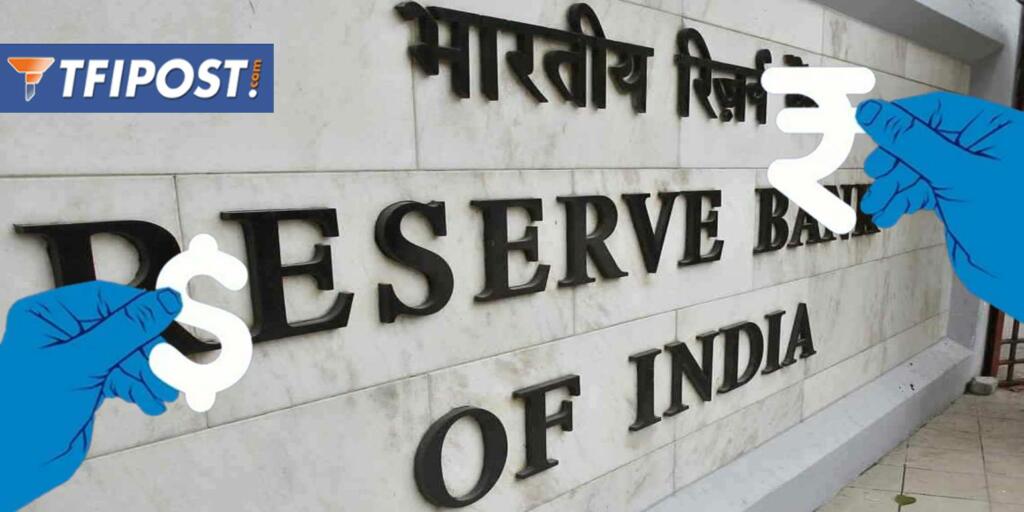Over the last 5 decades, we have become used to valuing our currency in terms of the US Dollar. We rejoice if the Rupee goes up, similarly, we feel sad if it goes down. But rest assured, future generations will not have to deal with this as RBI has decided to go hammer and tongs after the Dollar.
International trade in Rupee
RBI has said yes to establishing a mechanism for doing international trade in Rupee, instead of Dollar. According to the new arrangement, exports and imports will be denominated and invoiced in Indian Rupee. For this purpose, authorised Indian banks will have to open a Rupee Vostro account of the Foreign bank. Vostro is a Latin word which means “yours”. As the name suggests, A Vostro account is an account a correspondent bank holds on behalf of another bank. In other words, Indian banks will open a Rupee-dominated account with the Foreign bank like HSBC, Russia’s Sberbank and VTB and these banks will facilitate trade in Rupee.
Emphasising the need for such a settlement mechanism, RBI said, “In order to promote growth of global trade with emphasis on exports from India and to support the increasing interest of global trading community in Indian rupee, it has been decided to put in place an additional arrangement for invoicing, payment, and settlement of exports/imports in rupee,…”
Ukraine-Russia crisis is the immediate reason
The demand for excluding Dollar from international trade is not new. But it caught momentum after the Ukraine-Russia crisis kicked in. The United States and its allies imposed various sanctions on Russia, eventually throwing it out of the international payment system. Indian traders were also facing hurdles in transacting with Russia. India’s oil trade with Russia has skyrocketed in recent months, while Russian buyers are vouching for Indian food items, textiles and beauty products. After the initial hurdle gets cleared, the new system will enable both countries to engage in mutually beneficial trade.
The fallacies of Petrodollar
Additionally, the unsaid goal of this new mechanism is to bypass the Dollar trade. Currently, nearly 80 per cent of the global trade is carried out in Dollars. It simply means that the world is overdependent on the currency. Other than the United States and its allies, it is not beneficial for anyone. For the United States, the Dollar dominance saves it from exchange rate fluctuations. For example, in May 2022, public debt of the United States was $30.49 trillion. This should have been the warning sign for it, especially since Sri Lankan civil unrest largely owes its origin to debt.
But, the Biden administration is unfazed. It knows that it has taken those debts in Dollars and will pay according to its own whims and fancies. Additionally, in case of exigency, US Federal Reserve can print excess Dollars and use it to pay that debt. After the 2008 Financial crisis, United States has been printing Dollars on massive scale, so much so that now the inflation in the USA has started to hurt global financial system.
Such kind of facility is not available to other countries. All other countries have to take debt in Dollars using the prevailing exchange rates and then when they have to pay it back in a few years, they find that the total value of the debt in terms of their currency has changed. This puts extra pressure on domestic currency reserves. This phenomenon is the part of the reason why the Greek economy collapsed in early 2010s.
China and EU have proved to be smart
But, not everything is doomed for global trade. Various countries like the United Kingdom, Japan are smart to borrow money in their own currencies. Moreover, Dollar is also discredited among US’ friends. Countries of the European Union have declutched their borrowing from Dollar. Instead, they use common currency Euro to borrow money from international market. Within the bloc, these countries use Euro for intra-EU trade. Though, it may not be the best strategy, but it is definitely better than relying on Dollar, which is subject to more fluctuations.
China joined the race in early 2010 and currently its Renmibi is used in bilateral trade with Vietnam, Myanmar, Laos, Russia among other nations.
Revival of Internationalised Rupee
On its part, India had also started to look for modalities of internationalization of Rupee in early 2010s. In 2010, RBI commissioned a study called Internationalisation of Currency : The case of the Indian Rupee and Chinese Renminbi by Rajiv Ranjan and Anand Prakash). In the subsequent year Shyamala Gopinath conducted another study called An internationalised rupee?. Unfortunately, both these studies advised cautious approach. They suggested to start with increasing the acceptability of INR in the local region as was the norm before 1960s.
In the past, Rupee has been used for transactions for trade in countries like Singapore, Malaysia, Indonesia, Hong Kong, Sri Lanka, Qatar, UAE, Kuwait, Oman and Malaysia and even the UK. There was a currency called Gulf Rupee. By the beginning of 70s, the domination of Rupee declined due to ultra socialistic policies.
But, the enthusiasm is on. India’s products are now being accepted in more and more countries. They are relying on India and even the products of our financial market are making headlines. This is the apt time to introduce it.
Also Read: The Rouble-Rupee combo – An effective solution to the menace of petrodollar
